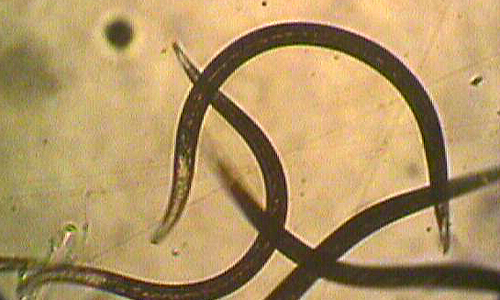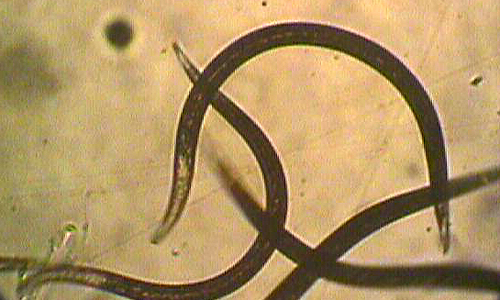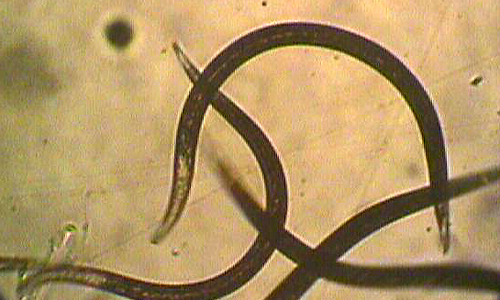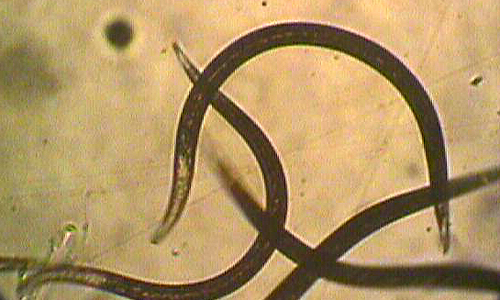May/June beetle
What are May/June Beetles?
May/June beetles, Phyllophaga crinita (Order: Coleoptera)are one of the most damaging pest of turfgrass (bermudagrass, St Augustinegrass and tall fescue), vegetables and ornamental plants. Adult beetles generally emerge in May through June from pupae every year in early May through late June. Adult beetles are brownish black in color and about 0.5 inch long whereas mature larvae are “C” shaped, about 1.0 inch long and creamy white in color with brown/orange head capsule. May/June beetle larvae mainly feed on the roots whereas and adults mainly feed on the foliage of host plants.
Facts (show all)
- List of the most economically devastating species of May/June Beetles
-
- May/June beetle Phyllophaga crinita
- Biology of May/June Beetles
-
Life cycle of May/June beetles consists of four life stages including eggs, larvae (grub), pupae and adults. May/June beetles generally emerge for their pupae in early May through late June. After mating, females lay eggs about 4-5 inches deep in the soil. These eggs hatch within 3-4 weeks into small larvae called grubs, which immediately starts feeding on turfgrass roots. While feeding, larvae develop through three instars/stages. Of these instars, first two stages are completed within 2 – 3 weeks but third instar is considered as overwintering stage because it remains as larva in the soil until spring and then pupates in the soil. In the early May, adults start emerging from pupae, mate, lay eggs and life cycle continues. Depending on ambient temperature, these beetles generally complete 1- 2 generations each year.
- What type of damage is caused by May/June beetles?
-
After hatching from eggs, small larvae also called grubs starts feeding on turfgrass roots. Heavy infestation of May/June beetles can cause yellowing and eventually death of turfgrass. This dead turf is generally loose and can be easily picked up like a piece of carpet with hands. The most important sign of presence of May/June beetle grubs in lawn is that the infested areas of lawn is destroyed by digging animals such as raccoons and skunks or by birds that are looking for grubs to feast on them. In addition to turfgrass, May/June beetles have a wide range of hosts, which include many agricultural, horticultural and ornamental plants. The larvae of this beetle mainly damages roots of their host plants whereas adults feed only on the plant foliage. Heavy feeding by adult beetles can reduce aesthetic values of many ornamental plants.
- Biological control of May/June beetles
-
Use of chemical pesticides is not allowed in organic productions due to their detrimental effects on humans, animals and environment. Therefore, control of May/June beetles with beneficial entomopathogenic nematodes is essential to reduce the crop losses caused by May/June beetles in the organic vegetable productions and golf courses. Two beneficial entomopathogenic nematodes including Heterorhabditis bacteriophora and Steinernema scarabaei nematodes have been considered as an effective biological control agents against May/June beetle grubs. However, Steinernema scarabaei nematodes are not commercially produced and therefore, they are not available in the market to use against May/June beetles. The best time to apply beneficial entomopathogenic nematodes is May/June months, because during these months both small and mature larvae and pupae of these beetles are present in the soil and can be easy target for nematodes. During these months, newly emerged female beetles lay eggs that hatch within 2-3 weeks into small larvae, which are very susceptible to beneficial entomopathogenic Heterorhabditis bacteriophora nematodes (Koppenhofer et al., 2004). This application can also target third instar May/June beetle larvae that are ready for pupation and target pupae before emergence of adult beetles.
- Parasitic beneficial entomopathogenic nematodes are effective against May/June beetles
-
- Heterorhabditis bacteriophora
- Steinernema scarabaei
- Research Papers
-
Grewal, P.S., Koppenhofer, A.M., and Choo, H.Y., 2005. Lawn, turfgrass and Pasture applications. In: Nematodes As Biocontrol Agents. Grewal, P.S. Ehlers, R.-U., Shapiro-Ilan, D. (eds.). CAB publishing, CAB International, Oxon. Pp 147-166.
Koppenhofer, A.M., Fuzy, E.M., Crocker, R.L., Gelernter, W.D. and Polavarapu, S. 2004. Pathogenicity of Heterorhabditis bacteriophora, Steinernema glaseri, and S. scarabaei (Rhabditida : Heterorhabditidae, Steinernematidae) against 12 white grub species (Coleoptera : Scarabaeidae). Biocontrol Science and Technology. 14: 87-92.






